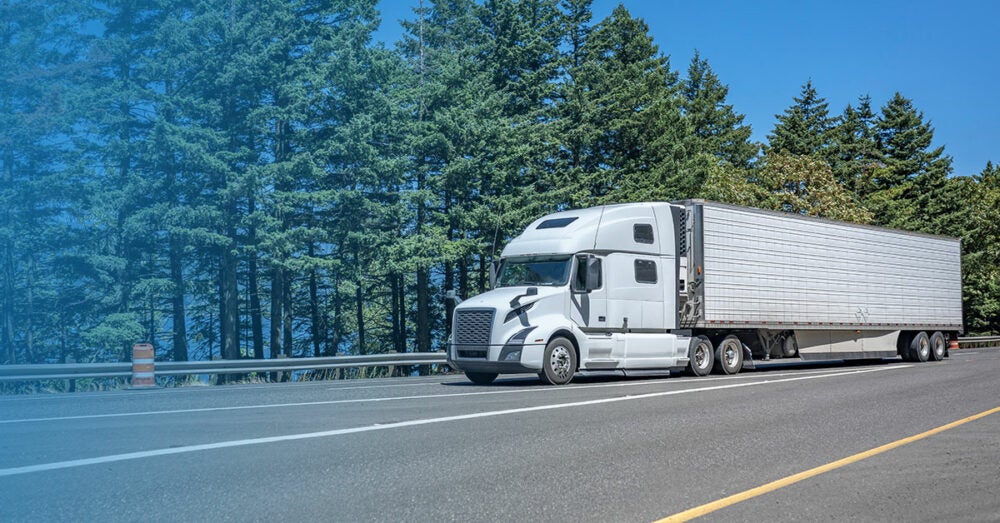Shippers face an onslaught of information in the digital age and often find it challenging to navigate the complex world of shipping.. In the modern era, it can be difficult for shippers to identify the best way to achieve cost savings, reduce risk and ensure optimal use of time in the procurement of transportation.
What is Full truckload shipping (FTL)?
Full truckload shipping refers to the use of an entire truck for a given shipment. Different definitions may exist, depending on the carrier used and type of shipment, including the following:
- Dry Van
- Backhauls
- Partial Truckload
- Flatbed
- Refrigerated
- Intermodal
Truckload shipping rates also vary between these types, but FTL freight, in general, is subject to three common maximum limit roles, including shipping 44,000 pounds of product, accommodating 48 standard pallets, or shipping 2500 ft.³ of product. Additionally, FTL shipments are often viewed as the best option when freight weighs more than 15,000 pounds or requires more space than 10 pallets.
Key Differences Between FTL Shipping and Other Over-the-Road (OTR) Modes
There are many different types, or modes, of transportation for shipping freight. These include LTL, rail, air and more. When these modes take place on the ground, they are known as “over-the-road” (OTR) modes, and the dominant forms of OTR transportation are full truckload , parcel (a.k.a small package) and LTL. FTL transport uses strict routes, shipping products from point A to point B and using the full space and weight capacity of a given truck. The key differences between FTL and other OTR modes drive the single shipment nature of full truckload freight. Although this provides several benefits, it also comes with challenges.
Much attention is devoted to the less-than-truckload (LTL) shipping mode when it comes to rooting out inefficiencies and costs as well as best practice education. However, there is an opportunity for shippers to unlock savings and efficiency through the use of full truckload shipping.
Pros & Cons of FTL Shipping
Benefits of Full Truckload Freight
Shipping FTL provides options that simply are not available through other shipping methods. In particular, you gain access to the entire shipping space of the truck. And with that, you gain many benefits, including:
- Cost savings – Shippers are not subject to most accessorial fees such as redelivery, reweigh and other common charges. Additionally, you won’t have to worry about the reclassification of your FTL shipment and the cost associated with it.
- Damage prevention – Since you have the entire truck space, there is no stopping to pick up other freight. Your freight will also be handled less and receive door-to-door delivery. In the end, the less your freight is handled, the less chance of damage.
- More options – FTL shipping provides options unavailable in other shipping methods. That includes refrigerated trucks, flatbeds, intermodal and dry van to name a few solutions. If you have specialty freight needs, truckload will often be the most efficient choice.
Challenges of FTL Freight Shipping
FTL transport comes with a few challenges, including the need to better pack merchandise, accept rigid delivery and shipping schedules, problems procuring truckload capacity and higher-than-other-mode rates. However, shippers can overcome these challenges with a few best practices, as explained by Zip Xpress Inc, which include the following:
- When you have enough items to fill an entire truck.
- When you prefer a whole truck dedicated to your goods.
- When the freight is time sensitive.
- When the weight makes it more cost effective than less than truckload.
Where is FTL freight s hipping headed?
Like most industries these days, the future of truckload is a fluid. There is an enormous amount of consumer demand that is causing capacity issues. This makes it challenging for some shippers to gain access to shipping space.
Truck capacity and rising rates of LTL and other modes of transportation are changing expectations for the future of full truckload freight, explains the Journal of Commerce. The electronic logging device (ELD) mandate, mother nature’s wrath during hurricane season, and overall increased consumer demand are pushing more shippers to use as many modes as possible to ensure the timely and cost-effective delivery of freight. As a result, demand for TL freight is expected to climb, and innovative alternate modes, like rail, are starting to take on characteristics of FTL transport, like the futuristic cold rail technology. Moreover, more shippers will seek to use freight consolidation to tap into the resources of FTL.
As a shipper, you have access to an enormous number of logistics solutions and services to help you face today’s freight shipping challenges. And you don’t have to do it alone. GlobalTranz offers a quality carrier network, a leading transportation management system delivering data-driven insights, and a team of industry experts available around the clock for support. Connect with one of our truckload experts to improve your own FTL freight practices so that your company can reduce the time, money, and resources.

